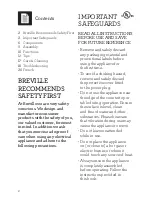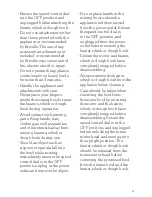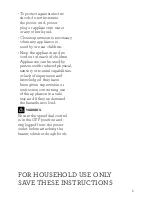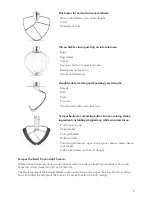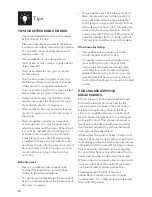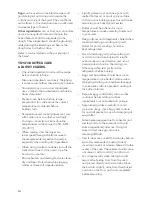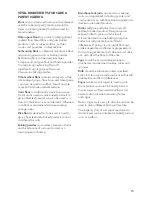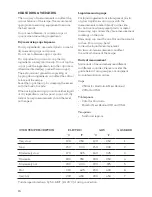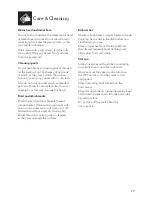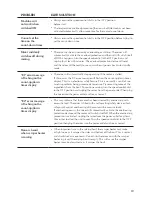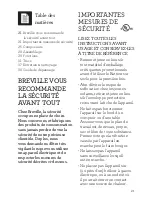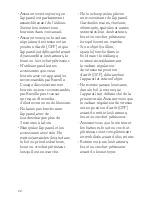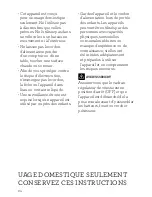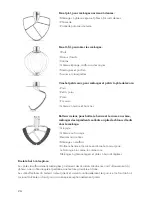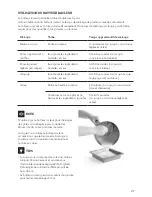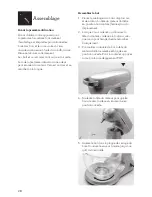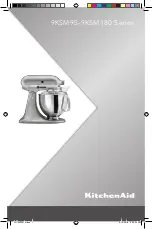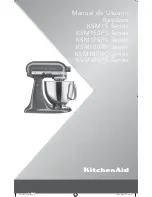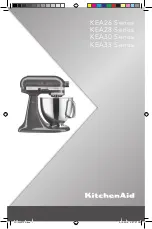
13
Wholemeal wheat flour
contains the bran,
germ and flour of the wheat grain. Although
breads baked with this type of flour will be
higher in fiber, the loaf may be heavier in
texture. Lighter textured bread can be achieved
by replacing 160g of whole wheat flour with
white bread flour.
Rye flour
popular for bread making, is low
in protein so it is essential to combine rye
flour with bread flour to make the bread rise
successfully. Rye flour is traditionally used
to make the heavy, dense Pumpernickel and
Black Breads.
Gluten flour
is made by extracting the gluten
portion from the wheat grain. Adding gluten
flour can improve the structure and quality
of bread when using low-protein, plain, stone
ground and whole wheat flour.
Bread mixes
contain flour, sugar, milk, salt, oil
and other ingredients such as bread improver.
Usually only the addition of water and yeast
is required.
Bread improvers
are available nationally
in supermarkets and health food stores.
The ingredients in a bread improver are
usually a food acid such as ascorbic acid
(Vitamin C) and other enzymes (amylases)
extracted from wheat flours. Adding
a bread improver will help strengthen the
dough resulting in a loaf that is higher
in volume, softer in texture, more stable
and has improved shelf life qualities.
A simple bread improver can be a crushed
unflavored vitamin C tablet added to the
dry ingredients.
Sugar
provides sweetness and flavor, browns
the crust and produces food for the yeast.
White sugar, brown sugar, honey and golden
syrup are all suitable to use. When using
honey or golden syrup it must be counted as
additional liquid. We have successfully tested
granular ‘Splenda’ brand low calorie sweetener
as a sugar substitute.
Powdered milk
and milk products enhance
the flavor and increase the nutritional value of
bread. Powdered milk is convenient and easy
to use (store in an airtight container in the
refrigerator).
Low fat or skim milk powder can be used with
good results. Soy milk powder can also be used
but produces a denser loaf. Fresh milk should
not be substituted unless stated in the recipe.
Salt
is an important ingredient in bread
making. In the dough, salt increases water
absorption, improves kneading, strengthens
the gluten development and controls
fermentation of the yeast which results in
improved loaf shape, crumb structure, crust
color, flavor and keeping qualities. As salt
inhibits the rising of bread be accurate
when measuring.
Fat
adds flavor and retains the moisture.
Vegetable oils such as safflower, sunflower,
canola, etc. can be used. Butter or margarine
can be substituted for oil in recipes but may
give a yellow colored crumb.
Yeast
is used as the raising agent for the breads
and requires liquid, sugar and warmth to grow
and rise. Before using dried yeast always check
the use by date, as stale yeast will prevent the
bread from rising. Smaller packets of bread
mix usually contain sachets of yeast. Larger
bulk bags of bread mix usually do not include
the yeast sachets, however the corresponding
brand of yeast may be purchased separately.
Some bulk and imported yeasts are more
active, therefore it is recommended to use less
of these yeasts. Yeast may also be more active
in hot weather. For information on other brands
of yeast relating to quantities contact the
manufacturer listed on the package.
Rapid rise yeast is a mixture of yeast and
bread improver. Brands will vary in strength.
If wishing to substitute for yeast in a recipe,
omit the bread improver. Rapid rise yeasts
should not be used with bread mix as bread
improver is already included.
Water
from the tap is used in all bread recipes.
If using water in cold climates or from the
refrigerator, allow water to come to room
temperature. Extremes of hot or cold water will
prevent the yeast activating.
Содержание Bakery Boss BEM825
Страница 1: ...the Bakery Chef Instruction Book BEM825 ...
Страница 20: ...the Bakery Chef Manuel d instructions BEM825 ...


